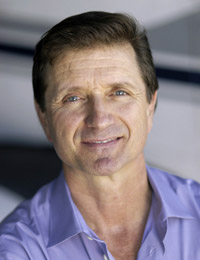License to learn: Lost skills
The total defeat of the feet

It’s one thing to lose something. It’s an entirely different matter to not even know you’ve lost it. This aptly describes what’s happened to stick-and-rudder skills in the flight training industry during the past several decades. The problem is twofold. Some of us aren’t even sure what stick-and-rudder flying skills are, and if they go missing we might not realize that they’re gone.
During a lecture on stick-and-rudder flying to several hundred pilots last year at AirVenture, one fellow informed the group that the CFIs at his FBO insist that all pilots keep their feet on the floorboard during all traffic pattern operations. It’s the total defeat of the feet. While failing to emphasize proper rudder and aileron coordination might just be lazy teaching, requiring that pilots not use the pedals in the pattern suggests a nearly complete lack of awareness about their function. Unfortunately, more than a few instructors make a similar recommendation. Yikes!
The “thinking” behind this technique is that a pilot is less likely to skid the airplane (and potentially induce a spin) if only aileron is used to make turns in the pattern. Yes, he or she will certainly slip during turns and slips are far less conducive to spinning. Believing this technique makes a pilot safer, however, is like believing that Washington, D.C., runs on batteries. The problem with this type of thinking is that there is actually very little thinking taking place.
Think about this. Without compensating for the airplane’s power-induced left turning tendency on climbout, the nose yaws and the airplane begins a roll to the left. Adding right aileron (and no right rudder) to stop the left roll yaws the nose further left, initially inducing a skid, not a slip. It’s clear that some pilots are completely unaware that they’ve lost their stick-and-rudder skills when they must rely on the Coriolis force to keep their airplanes aligned with the runway centerline on climbout.
No, we should not keep our feet on the floorboard during pattern operations, or when maneuvering an airplane. Then again, unless we know what we’re missing, we simply won’t miss it when it’s gone. So what exactly are stick-and-rudder flying skills?
In a column a few months ago, I identified two types of pilots—stick-and-rudder pilots and panel pilots. Each uses a different technique to fly their airplane, but it’s the stick-and-rudder pilot who is less likely to lose control of his or her airplane during all phases of flight.
A good stick-and-rudder pilot flies the airplane primarily by looking outside the cockpit while paying attention to what his physical senses are telling him. A panel pilot flies primarily by referencing the airspeed indicator, attitude indicator, and inclinometer and pays very little attention to the physical sensations of flight.
A good stick-and-rudder pilot determines his angle of attack by looking at the way the environment moves in relation to the wing’s chord line. He doesn’t need an angle of attack indicator or stall horn to inform him when the wing is about to stall. He observes the airplane’s attitude and nose movement, along with changes in control pressures, control response, G-force, and uneven pressure distribution on his derriere. These are the senses he uses to fly coordinated, at precise attitudes and airspeeds.
A panel pilot, on the other hand, evaluates his proximity to a stall primarily by looking at the airspeed indicator and listening for the stall horn. He decides how much rudder to use (if he uses it at all) by looking at the ball in the inclinometer. He considers himself immune from a stall if the nose points below the horizon, and he often fails to notice and respond to any uneven pressure on his derriere or sensation of increased G-loading. In short, he depends on his instruments for visual flight and pays little attention to the physical sensations of flight.
You can cover the entire instrument panel of a stick-and-rudder pilot and he or she will comfortably fly in the traffic pattern without having to file a missing-panel report with the authorities. These pilots pretty much know what their performance instruments read without seeing them. For a panel pilot, by contrast, covering any flight instrument means that you’ll hear how partial they are to it—thus the real origin of the term partial panel.
I’d like to think that pilots who fly the pattern with their feet on the floorboard are few and very far between. Then again, I’m prepared for the day when a pilot calls ATC while holding short of the runway and says, “This is Two-One-Three-Two Bravo, ready for takeoff, remaining in the pattern. I’d like right or left traffic, depending on how strong the Coriolis force is in this location.”
Visit the author’s blog.


